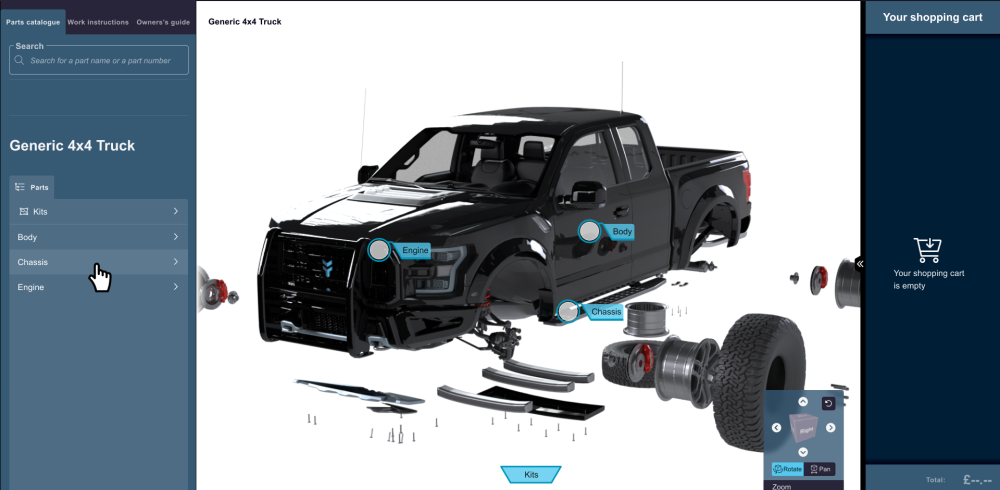As the world pushes manufacturers to become increasingly sustainable, the lifetime of the average product will become longer, that means building customer loyalty matters more than ever. The era of ‘planned obsolescence’ is coming to an end not just because consumers and business buyers demand it, but also due to regulatory pressures.
Right to repair laws are being passed around the world as countries respond to the increasing amount of waste being produced globally. According to the Global E-Waste Statistics Partnership (GESP), waste volume grew by 21% in the five years up to 2019.
In the UK, legislation has already been passed that will compel manufacturers to provide repairers with access to spare parts and technical information by July 2023.
Manufacturers can choose to look at this in two ways: as a burdensome requirement that will add costs and complications, or an opportunity to build stronger relationships with customers in the aftermarket. There are good reasons to choose the latter.
Firstly, there is no doubt that proactively taking steps to improve the reliability and serviceability of products will reflect well on manufacturers. It will help build trust in the company and its products, while demonstrating that it intends to be an ethical and sustainable brand.
Secondly, the aftermarket has the potential to be lucrative. For anyone concerned that right to repair will result in falling product sales, take solace in the fact that the need to service products will increase – and, as a result, so will part sales. And, while spare parts may constitute a smaller percentage of revenues for many manufacturers, the margins are often significantly higher, which can make the aftermarket particularly profitable.
Seizing the opportunity
To capitalise on this potential, however, many manufacturers will need to vastly improve their aftermarket offering. In most cases, this will involve moving away from old school product catalogues and towards interactive digital platforms. Doing so will help to help business build stronger customer loyalty and enable ecommerce.
When you consider the research of Fred Reichheld, for example, the inventor of the net promoter score, it can pay to focus on customer loyalty. He found that by increasing customer retention by 5% companies increase profits by 25% and higher.
As manufacturers make this transition, it is worth focusing on the customer experience, and, as they do so, they will want to remember three ‘E’s: ease, efficiency and engagement.
Ease
Whether manufacturers are looking to provide access to spare parts or technical information, their aim should be to make life as easy as possible for the customer. Parts should be easy to find, identify and inspect. Ideally, all the information associated with that part – specification, price and even stock levels – should be made available in an instant.
If you compare SamsonVT’s Partful to a conventional product catalogue, for instance, you soon start to see the difference that a highly visual digital platform can make. Instead of asking users to rifle through hundreds of pages to source the right part, they simply need to locate the part on the product’s 3D virtual twin. They can turn the 3D model in any direction, take the virtual product apart to isolate the components and receive all the details they need.
Efficiency
If customers then want to purchase a part, manufacturers will also want to make this process as simple as possible. Ideally, once they have identified the part, they should be able to buy it right there and then – just like an Amazon Prime purchase.
Customers shouldn’t be asked to go elsewhere to acquire the part. They shouldn’t need to email or call anyone or visit another company’s website. Doing so adds extra steps and complexity that can lead to ordering delays and errors – and it also encourages customers to buy from third parties.
Engagement
It shouldn’t be understated how important every touch point has on a customer’s loyalty to the manufacturer. And, if companies are simply providing the most basic parts catalogue, they are missing a big opportunity for customers to engage positively with the brand.
Again, if you look at Partful, it is providing customers with an immersive, interactive 3D experience that allows them to play around with a virtual product. It’s an enjoyable tool to use and isn’t going to frustrate customers like the experience of using product catalogues commonly does.
It’s never been more important to get these aftermarket experiences right. It’s inevitable that companies will need to move towards products that are easier to maintain – and this will increase after sales activity. So, taking steps to improve those interactions is only logical if businesses want to maintain customer loyalty and drive profits.
____
If you want to learn more about how to improve your aftersales experience and increase customer loyalty, then get in touch with SamsonVT at samsonvt.com today.
Manufacturing & Engineering Magazine | The Home of Manufacturing Industry News













